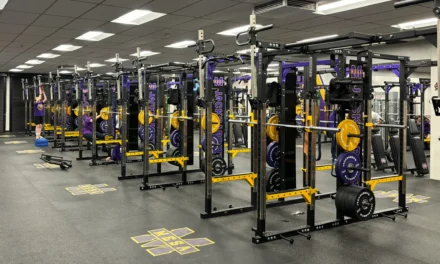Managing a school’s athletic budget is about more than spreadsheets — it’s about making decisions that reflect school values and goals. With rising costs, limited funding, and growing demands from every direction, athletic directors are challenged to stretch every dollar while ensuring fair support across all sports and student-athletes.
Balancing Budget with Purpose
Athletic budgets rarely cover every need. From equipment and uniforms to travel costs and facility maintenance, there’s always more to be done than funds allow. That’s why ADs must be part strategist, part problem-solver.
Creative budgeting starts with prioritization. What purchases directly impact safety? Which ones benefit multiple teams? Are there areas where used equipment, shared resources, or delayed purchases are acceptable? Knowing where to invest and where to save is key to maintaining both fiscal responsibility and program quality.
Equity Over Popularity
Perhaps the most challenging aspect of budget management is ensuring equity across programs. Popular sports like football and basketball generally demand more attention, but that doesn’t mean they should receive every piece of the pie.
Equal opportunity means creating a level playing field for all students — regardless of gender, sport, or visibility. Which requires deliberate effort towards balancing support between boys’ and girls’ sports, or between varsity powerhouses and emerging programs. Equity isn’t about giving every program the same thing but making sure everyone has what they need to play.
Booster Clubs and Private Funding
Booster clubs are both a blessing and a challenge. While they’re essential for raising funds, their efforts can naturally skew resources toward programs with larger followings or more active parents.
Athletic directors must set clear expectations and systems to ensure fairness. Some schools create pooled booster funds or ask that all donations funnel through the entire athletic department to be distributed according to need. While that may not always be popular, it reinforces the principle that all sports deserve support — not just the ones with the largest fanbase.
Facility Upgrades
When it comes to facility upgrades, long-term and multi-use are the names of the game. Can a new scoreboard serve multiple sports? Is one turf field better than separate areas for each team? Can weight room upgrades benefit both athletic teams and the general student population? Stretching budgets means pursuing improvements that impact multiple teams at once.
Creative Solutions and Community Engagement
Some schools have turned to creative solutions: renting out facilities to local leagues, forming partnerships with nearby colleges, or applying for grants tied to physical education, health, or youth engagement. Others focus on smart scheduling and resource sharing — having multiple teams use the same gym, field, or bus without wasteful duplication or downtime.
When resources are tight, communication become even more crucial. Involving coaches, parents, and even student-athletes in the budgeting conversation fosters transparency and reduces conflict. It also helps the community see just how far the athletic department is working to go on their children’s behalf.
Optimized Resource Management
There’s no magic formula for budgeting in high school athletics. Every school faces unique constraints, political dynamics, and community pressures. But athletic directors who lead with transparency, creativity, and a commitment to equity are building a culture that values every student-athlete and makes the most of every opportunity.










